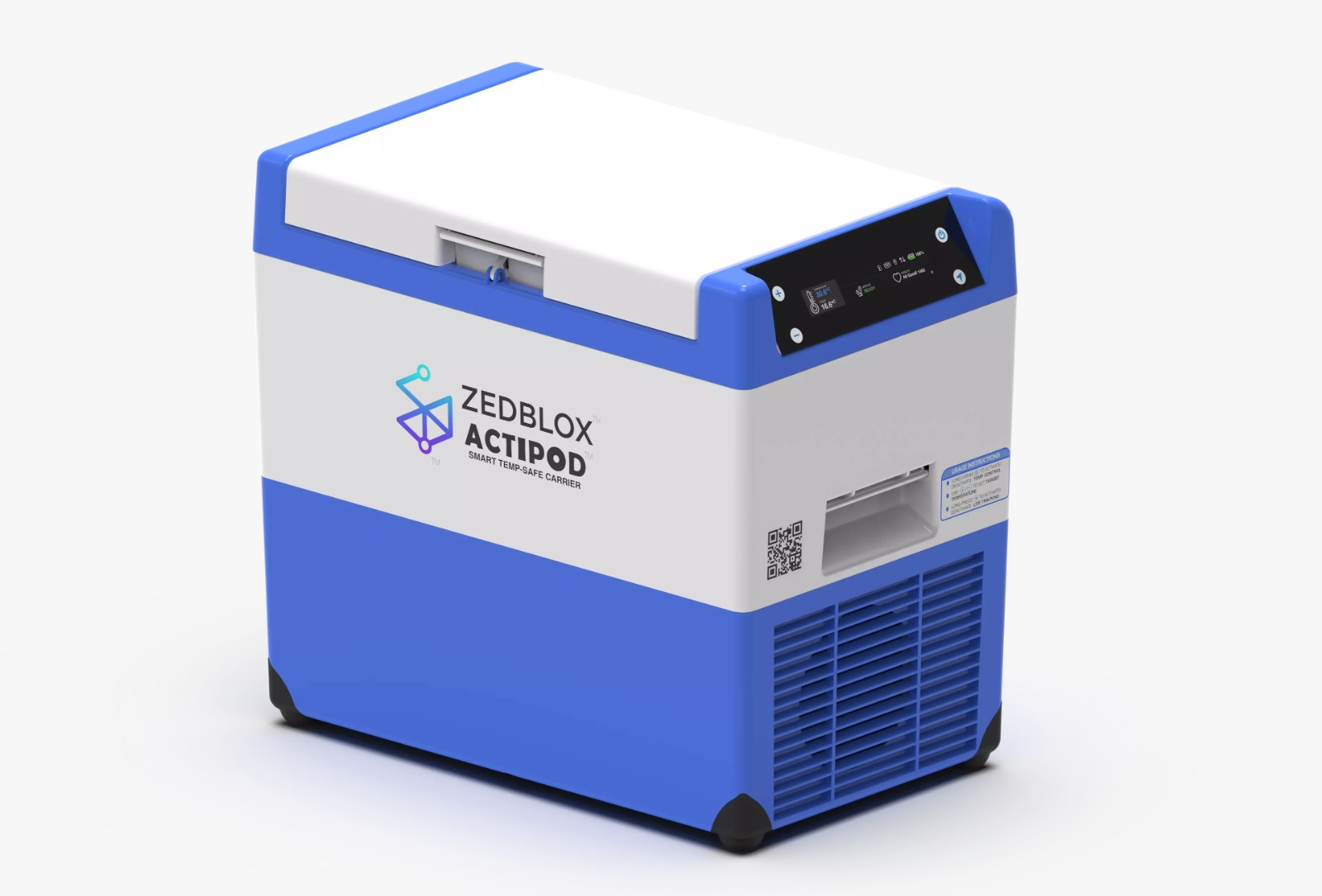Vaccine carriers are an important tool in the distribution and delivery of vaccines around the world. Vaccines are sensitive biological products that require strict temperature control to maintain their quality and efficacy, so vaccine carriers are designed to ensure that they remain potent and effective during transport and storage.
They play a critical role in ensuring that vaccines are transported and stored at the correct temperature and remain effective and safe to use. Their functions include maintaining the cold chain, temperature monitoring, protecting vaccines from environmental factors, durability, and compatibility with specific vaccines.
By using vaccine carriers, we can ensure that vaccines reach the people who need them, even in challenging environments. However, their uses, types, and functionality are not just as usually people assume. Their roles are quite vast and versatile. Delve into a comprehensive compilation that encapsulates the various categories, functionalities, and applications of vaccine carrier boxes. Read till the end!
Types of Vaccine Carriers
- Cold Boxes
These are insulated containers that use ice packs or gel packs to maintain the temperature inside. Cold boxes are ideal for transporting small quantities of vaccines for short periods. These are lightweight, portable, and easy-to-transport vaccine carriers. These boxes come in different sizes, and they can maintain the temperature of vaccines within the required range for up to five days without the use of an external power source.
- Passive Vaccine Carriers
Passive vaccine carriers are designed to maintain the temperature of vaccines within the required range without the use of any external power source. These carriers are usually made of materials with excellent insulation properties, such as polystyrene or polyurethane. Passive vaccine carriers come in different sizes, and they can be used for the transportation of small quantities of vaccines.
- Active Vaccine Carriers
Active vaccine carriers are designed to maintain the temperature of vaccines within the required range, using an external power source. These carriers usually come equipped with a cooling or heating element and can be plugged into an electrical outlet or a car’s power outlet. ZedBlox ActiPod is one of a kind active carrier. It comes with a powered battery that lasts 12-24 hours and can be quickly charged up with external power usage. This hassle-free, smart solution serves all needs of today. Active vaccine carriers are commonly used for the transportation of large quantities of vaccines.
- Refrigerated Carriers
These are larger containers that are refrigerated and maintain a constant temperature inside. Refrigerated carriers are ideal for transporting larger quantities of vaccines for longer periods. Refrigerators are used to store vaccines in health facilities. They come in different sizes and can be either powered by electricity or gas. Refrigerators can maintain the temperature of vaccines within the required range, ensuring that vaccines remain safe and effective.
- Freezers
Freezers are used to store vaccines that require ultra-low temperatures, such as the Pfizer-BioNTech COVID-19 vaccine. These freezers can maintain temperatures as low as -80°C, ensuring that vaccines remain effective for an extended period.
Functions of Vaccine Carriers
Vaccine carriers are designed to safely transport vaccines from manufacturers to healthcare facilities, clinics, and other locations where they will be administered to patients. Here are its functions in brief!
Maintaining the Cold Chain
Vaccine carriers are designed to maintain the cold chain, which is the process of storing and transporting vaccines at the correct temperature range from the manufacturer to the end-user. Vaccine carriers are designed to keep vaccines within the recommended temperature range, typically between 2°C and 8°C, to ensure that they remain effective and safe to use.
Transport
Vaccine carriers are designed to transport vaccines safely from one location to another. They can be used to transport vaccines across short or long distances, locally or internationally, by various modes of transportation, including ground, air, or sea.
Organization
Vaccine carriers allow healthcare providers to organize and manage the delivery of vaccines efficiently. They are often designed with multiple compartments and labels to help healthcare workers identify and access specific vaccines easily.
Temperature Monitoring
Vaccine carriers often include temperature monitoring devices that allow users to check the temperature inside the container during transport and storage. These devices record temperature data over time. Temperature monitoring is essential to ensure that vaccines are not exposed to any risk that could affect their potency and efficacy.
Protecting Vaccines
Vaccine carriers protect vaccines from light, moisture, and other environmental factors that could affect their potency and efficacy. For example, some vaccines are light-sensitive and can lose their effectiveness if exposed to light. Vaccine carriers are designed to prevent light exposure by using opaque materials or light-blocking coatings.
Uses of vaccine carriers
Vaccine carrier boxes have a wide range of uses in healthcare, animal health, research, and other industries. They play a critical role in ensuring that vaccines and other sensitive biological products remain potent and effective during storage and transport. By using vaccine carrier boxes, we can improve vaccination coverage, prevent disease outbreaks, and protect the health and well-being of humans and animals. Here are some of its uses!
- Distribution of Vaccines
Vaccine carriers are essential for the distribution of vaccines to clinics, hospitals, and other healthcare facilities. They ensure that vaccines remain potent and effective during transport and storage. It is one of the primary uses of vaccine carrier boxes. They can be used to transport vaccines locally or internationally, depending on the need.
- Outreach Programs
Vaccine carriers are also used in outreach programs to deliver vaccines to remote and underserved areas. These programs aim to improve vaccination coverage in areas where access to healthcare is limited. These carriers can maintain the cold chain during long journeys, ensuring that vaccines are effective when they reach their destination. They are also designed to be durable and portable, making them suitable for use in outreach programs.
- Disaster Response
Vaccine carriers can be deployed in disaster response situations, such as natural disasters or disease outbreaks. They allow vaccines to be transported and stored safely, even in challenging environments, and ensure that vaccines remain effective when they are needed most.
- Blood and Organ Transportation
In addition to vaccines, vaccine carrier boxes can also be used for the transportation of blood and organs for transplant. These items require strict temperature control to ensure their viability, and vaccine carrier boxes can provide the necessary environment to maintain the correct temperature range during transport.
- Animal Vaccines
Vaccine carrier boxes are not only used for human vaccines but also for animal vaccines. They are used in the transport and storage of animal vaccines, ensuring that they remain potent and effective. Animal vaccines are used to prevent diseases in livestock and pets and are essential for the health and well-being of animals.
- Research
Vaccine carrier boxes are also used in research laboratories to transport and store vaccines during clinical trials and other research projects. These projects require strict temperature control to ensure the safety and efficacy of vaccines, and vaccine carrier boxes can provide the necessary environment to maintain the cold chain.
Bottom Line
Vaccine carriers are an essential tool in the distribution and delivery of vaccines. They ensure that vaccines are transported and stored at the correct temperature, maintaining their potency and efficacy. Vaccine carriers come in different types, including cold boxes, refrigerated carriers, and passive vaccine carriers, and serve various functions, such as maintaining the cold chain, temperature monitoring, and protecting vaccines from environmental factors.
Their uses range from the distribution of vaccines to outreach programs and disaster response. By using vaccine carriers, we can ensure that vaccines reach the people who need them, even in challenging environments.



Be First to Comment